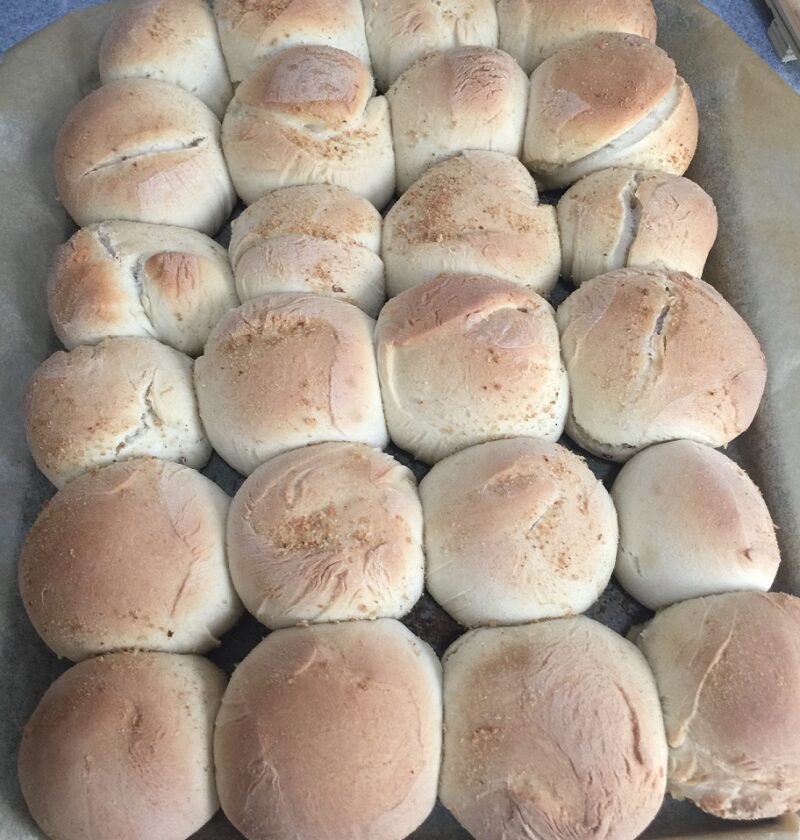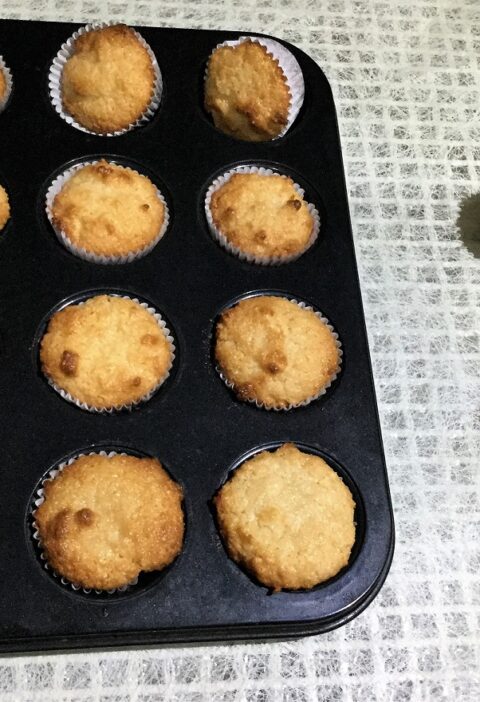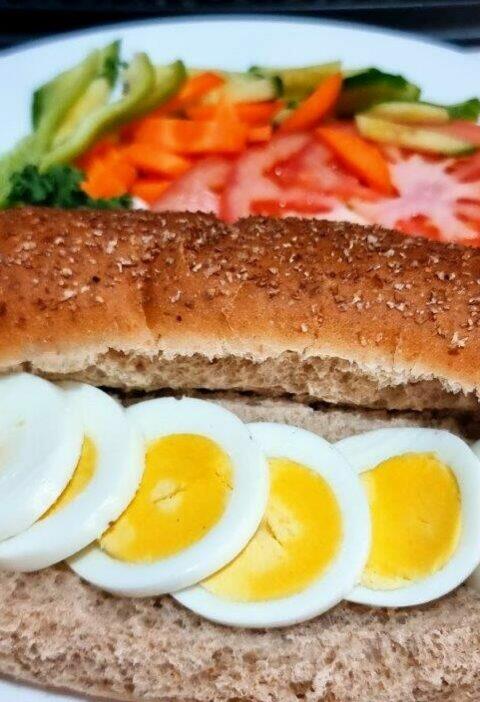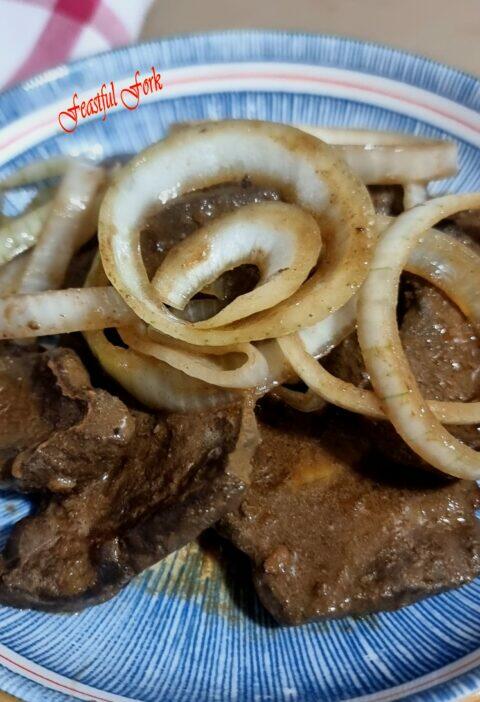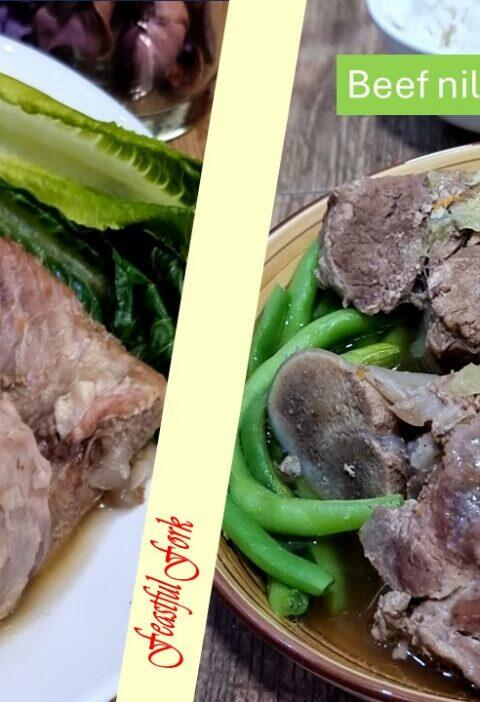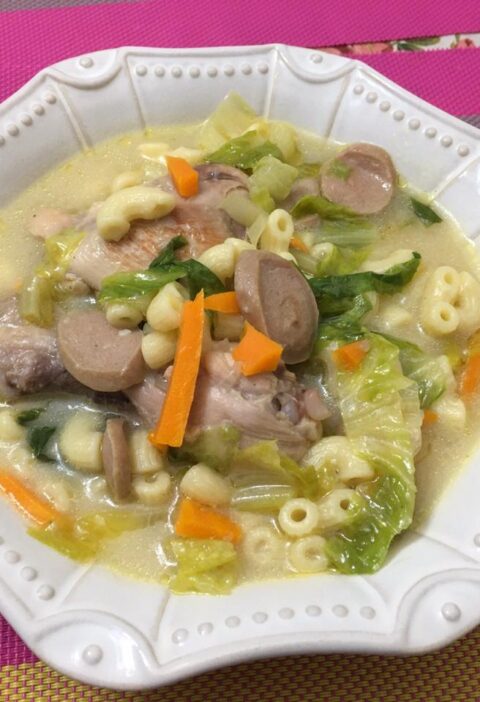Until about half a century ago and being a breakfast item, pandesal was available at certain times in the morning either from the bakeries or was peddled in the neighborhood, contained in commercial cardboard boxes lined with newspapers (yes, newspapers) that kept them hot, which was preferred. These days, from around the 1970s, pandesals are sold all day! “Hot” pandesal started as a fad which made this bread not only for breakfast but as merienda (snack) as well and then until recently, it also replaces dinner rolls.
pandesal variety
Recipes for this Philippine bread also now come in varieties. Pandesal, by the way, is a Spanish term that meant “salt bread.” Quite ironical, it is a bit sweet, rather than salty. This blog offers a good historical look at this versatile bread. I wonder, if pandesal’s recipes have undergone a lot of changes, what is common among all of them to retain its name? The softness? The color? I have to admit that I have no idea because there are soft and there are heavy pandesal; yellowish, golden, light brownish varieties. There are even greenish versions nowadays with the addition of malunggay in the recipe, cheese, ube, etc. Could it be the breadcrumbs that fall off the moment you pick that nice-to-the mouth thing and which continue to happen till you are done with your last bite? Wheh! Well then, this question will continue to be an enigma to me.
I find it interesting that even the flour type has extended from mere all-purpose flour to wheat.
pandesal ingredients
The most important ingredient in making pandesal is yeast. It makes the dough rise fast. You can use instant dry active yeast instead of fresh yeast. But make sure that the amount of water used is enough to activate the yeast. If too much water is added, the yeast won’t work properly. Also, don’t add sugar when using instant dry active yeast. Sugar inhibits the fermentation process.
The second essential ingredient is salt. Salt helps keep the dough moist while rising. Too little salt may result in flat pandesals. On the other hand, adding more salt will cause the dough to become tough. So, how do we know whether our breads are ready yet? We check their texture. When cooked, they should still hold together without breaking apart.
perfect anytime.. how to eat this Filipino bread
This delicious bread can be eaten in different ways and with different partners:
- dipped in coffee, hot milk, hot or cold chocolate drink
- peanut butter spread, jam, cheese, corned beef (sautéed with onions first – heaven!), condensed milk (are you kidding me?)
- sugar (I am not kidding!)
- jaggery (are you serious?)
- sardines (yes, sardines!) — you name it
- coconut jam (yup!)
- etc… the list can be longer!
Pandesal is an accommodating piece of bread that satiates different taste buds and fills any stomach!
Fabulous first!
I am new to baking pandesal. More than 10 recipes in about 10 years, but never got the courage to do it because I was intimidated by the length of prep and baking time. My brother, Francis, as a self-made baker, has a good recipe for pandesal. But nope, thanks, I will buy pandesal from his bakery, the local bakeries, or any high-end pandesal makers all over Manila, and in Al-Khobar, Saudi Arabia. Bake it, no way! Francis even has a (secret) formula so that his pandesal pieces turn out the same even if he increases or decreases his recipe. However, the recipe of a friend and colleague, Mark Fabulous (a play on his last name Pabillosa) is the one I would feature in this post. I asked Mark to demo pandesal-baking two weekends ago. He graciously agreed and we (yes, weeeeee) successfully produced 24 pieces of good-tasting pandesal. Baking pandesal became addicting from there.
Cooking tip: set the right baking temperature as it is pertinent in producing the best bread.
Below is Mark’s recipe which he very generously shared:
Video: How to Make Pandesal


